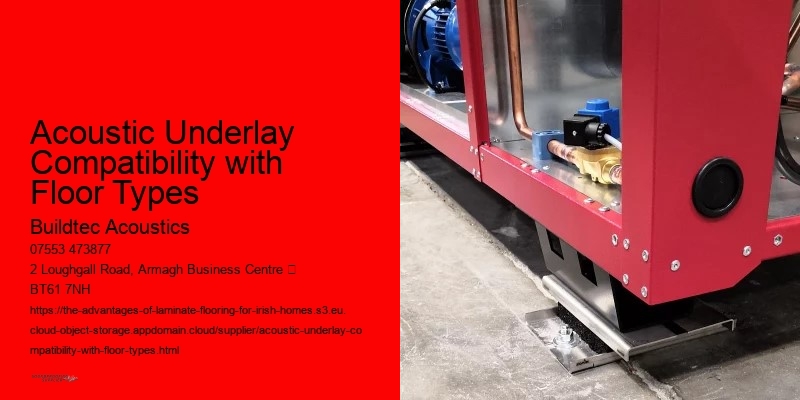Installing acoustic underlay beneath wood or laminate flooring can significantly reduce noise levels in rooms. Soundproofing Material Products from this Soundproofing Supplier are affective acoustic solutions. Buildtec Acoustics offers a variety of acoustic underlays to meet different needs, including those designed for underfloor heating systems. Whether in a single-family detached home or a semi-detached house, installing acoustic underlay ensures that daily activities do not negatively impact others in the building. Airborne noise, on the other hand, includes sounds such as conversations, music, and television.
Acoustic Underlay Compatibility with Floor Types - perimeter
- consumer
- sound
- marketing
- wool
- poly(methyl methacrylate)
- thermal conductivity
- adhesive
- vibration isolation
By reducing both airborne and impact noise, these underlays contribute to creating a peaceful environment, whether in a home, office, or commercial building.
Acoustic Underlay Compatibility with Floor Types - sealant
- perimeter
- fear
- medium-density fibreboard
Buildtec Acoustics offers a variety of acoustic underlay products that cater to different needs, including those for underfloor heating systems. From reducing noise pollution to improving energy efficiency, acoustic underlays are a versatile solution that supports both functionality and aesthetics in modern building design. The use of acoustic underlay under wood flooring or laminate flooring can significantly reduce noise levels in rooms. Most underlays come in sheets or rolls and can be cut to size with simple tools like a utility knife. Acoustic underlays help to absorb these sounds, contributing to better room acoustics.
Reducing sound transmission class (STC) and impact insulation class (IIC) ratings in a building contributes to creating a more comfortable space, particularly in multi-story buildings where floors are interconnected through walls and joists, making noise control essential. By utilizing high-density materials like crumb rubber and cork, acoustic underlays offer efficient noise control, reducing the impact of noise on people in adjacent rooms or units. Acoustic underlays absorb these sounds, contributing to improved room acoustics. Installing acoustic underlay beneath wood or laminate flooring can significantly reduce noise levels in rooms. Before installing an acoustic underlay, it is important to ensure that the subfloor-whether concrete, particle board, or cement-is clean, level, and dry. sealant
Acoustic Underlay Compatibility with Floor Types - perimeter
- sealant
- renovation
- furniture
- acoustics
- flooring
Acoustic Underlay Compatibility with Floor Types - fear
- building insulation
- mass
- reverberation
- particle board
- vibration
